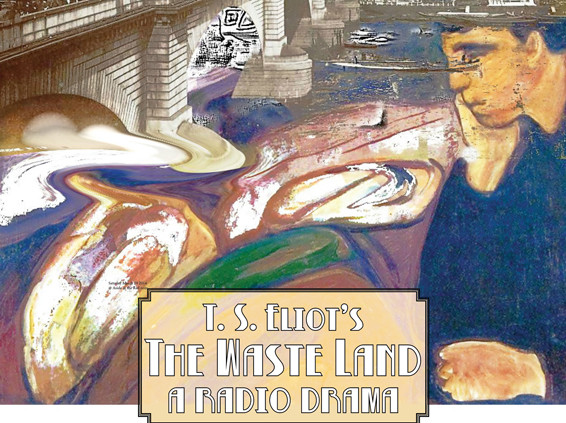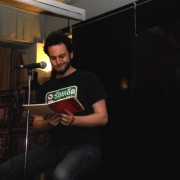TS Eliot’s The Waste Land, a radio drama, March 2014
For Aside @The Red Room on March 29, 2014
Red Room Radio Redux (R 4) has been commissioned to present a reading of TS Eliot’s The Waste Land, widely regarded as one of the most important modern poems of the 20th century. For this special reading of the poem, The Waste Land has been adapted for four voices with live sound effects and accompanied by the music by influential contemporaries of the poet: Stravinsky, Schoenberg, Berlin, Ravel, and popular music in London at the time. Featuring the vocal talents of Marc Anthony, Andrianna Smela, Charlie Storrar, and Pat Woods. Directed by Ruth Landowne Giordano. Original concept and script by Ignatz Ratzkywatzky, The text is rich with dramatic situations, dialogs, lyrics, foreign languages and the inner workings of the poet’s mind during a time of rapid social changes. This will surely be a unique approach to this historic piece.
FROM THE DESK OF Ignatz Ratzkywatzky, dramaturge, writer, and originator:
T.S. Eliot’s Waste Land: A Radio Drama probes the mystery of existence, the angst of the human heart and the marvelous irony that our dread of death celebrates our elation and passion to live.
From Wikipedia:
“The Waste Land” is a long poem written by T.S. Eliot. It is widely regarded as “one of the most important poems of the 20th century” and a central text in Modernist poetry. Published in 1922, the 434-line poem first appeared in the U.K. in the October issue of The Criterion and in the U.S. in the November issue of The Dial. It was published in book form in December 1922. Among its famous phrases are “April is the cruellest month”, “I will show you fear in a handful of dust”, and the mantra in the Sanskrit language “Shantih shantih shantih“.]
Eliot’s poem loosely follows the legend of the Holy Grail and the Fisher King combined with vignettes of the contemporary social condition in British society. Eliot employs many literary and cultural allusions from the Western canon and from Buddhism and the Hindu Upanishads. The poem shifts between voices of satire and prophecy featuring abrupt and unannounced changes of speaker, location and time and conjuring of a vast and dissonant range of cultures and literatures.
The poem’s structure is divided into five sections. The first section, titled The Burial of the Dead introduces the diverse themes of disillusionment and despair. The second, titled A Game of Chess employs vignettes of several characters—alternating narrations—that address those themes experientially. The Fire Sermon, the third section, offers a philosophical meditation in relation to the imagery of death and views of self-denial in juxtaposition influenced by Augustine of Hippo and eastern religions. After a fourth section that includes a brief lyrical petition, the culminating fifth section, What the Thunder Said concludes with an image of judgment.
(c) Copyright 2014 Red Room. Material on this site is the property of contributing members of the Red Room Community. Please do not copy any part of this publication. Thank you.







